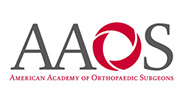What is Transphyseal Surgery?
Surgery may be necessary to reconstruct an irreparable anterior cruciate ligament (torn ACL). It usually involves the use of a soft tissue graft which is passed through tunnels drilled into the shin and thigh bones and secured to these bones. In a child or adolescent, a transphyseal surgery may be performed where the tunnels pass through the growth plate or physis (area near the end of a long bone where growth is still occurring). Injury to this area could potentially affect growth and result in deformity. An appropriate surgical technique is used to minimize these effects.
Indications for Transphyseal Surgery
ACL reconstruction via transphyseal surgery is recommended for active children who are involved in sports or recreational activities. Severe knee pain and inability to continue activities are the primary indications for ACL reconstruction.
The other indications include:
- Failure to improve or comply with non-operative treatment
- A recurrent feeling of knee instability during daily activities
- Repeated episodes of the knee “giving way”
- Associated meniscal tears and/or severe injuries to other knee ligaments
- Generalized laxity of the ligaments
Knee instability due to an ACL tear can lead to meniscal and cartilage injuries and early onset of arthritis
Benefits of Transphyseal Surgery
Benefits of transphyseal surgery include:
- Effective treatment with minimal complications
- Improved knee stability
- Allows return to sports following adequate rehabilitation
Transphyseal surgery has demonstrated excellent functional results in children with no significant growth disturbances.
How is the Procedure Performed?
Hamstring tendons on the inner side of the knee (inner thigh muscle) are mostly used as a graft in transphyseal ACL reconstruction surgery. Two of the tendons are removed and bundled together to create a new ACL.
- The procedure is performed under general anesthesia
- You will lie on your back
- A tourniquet is placed over the thigh
- Small incisions are made over the knee to insert an arthroscope and instruments.
- The torn or injured ACL is debrided
- Tunnels are drilled through the bones and oriented to minimize injury as they pass through the growth plates (making them small and as vertical and central as possible)
- Drilling is performed slowly which also minimizes injury to the growth plate
- The graft is passed through the tunnels
- The graft is fixed and secured with screws or staples away from the growth plate
- The incisions are closed, and a dressing is applied
- A brace may sometimes be used for support
You will usually be able to return home on the day of the surgery.
Recovery After Transphyseal Surgery
Post-procedure, X-rays of the knee are obtained to check the position of the tunnels and fixation. A rehabilitation program that includes specific exercises for hamstring strengthening and knee motion restoration is instituted.
What are the Risks Associated with the Procedure?
Transphyseal ACL reconstruction surgery carries a few risks some of which are correctable. They include:
- Damage to the physis
- Traumatic graft disruption
- Post-operative knee instability
- Growth disturbance or disorder
- Tibial or femoral overgrowth
- Valgus or angular deformity
- Recurrent ACL tear
- Long healing time




